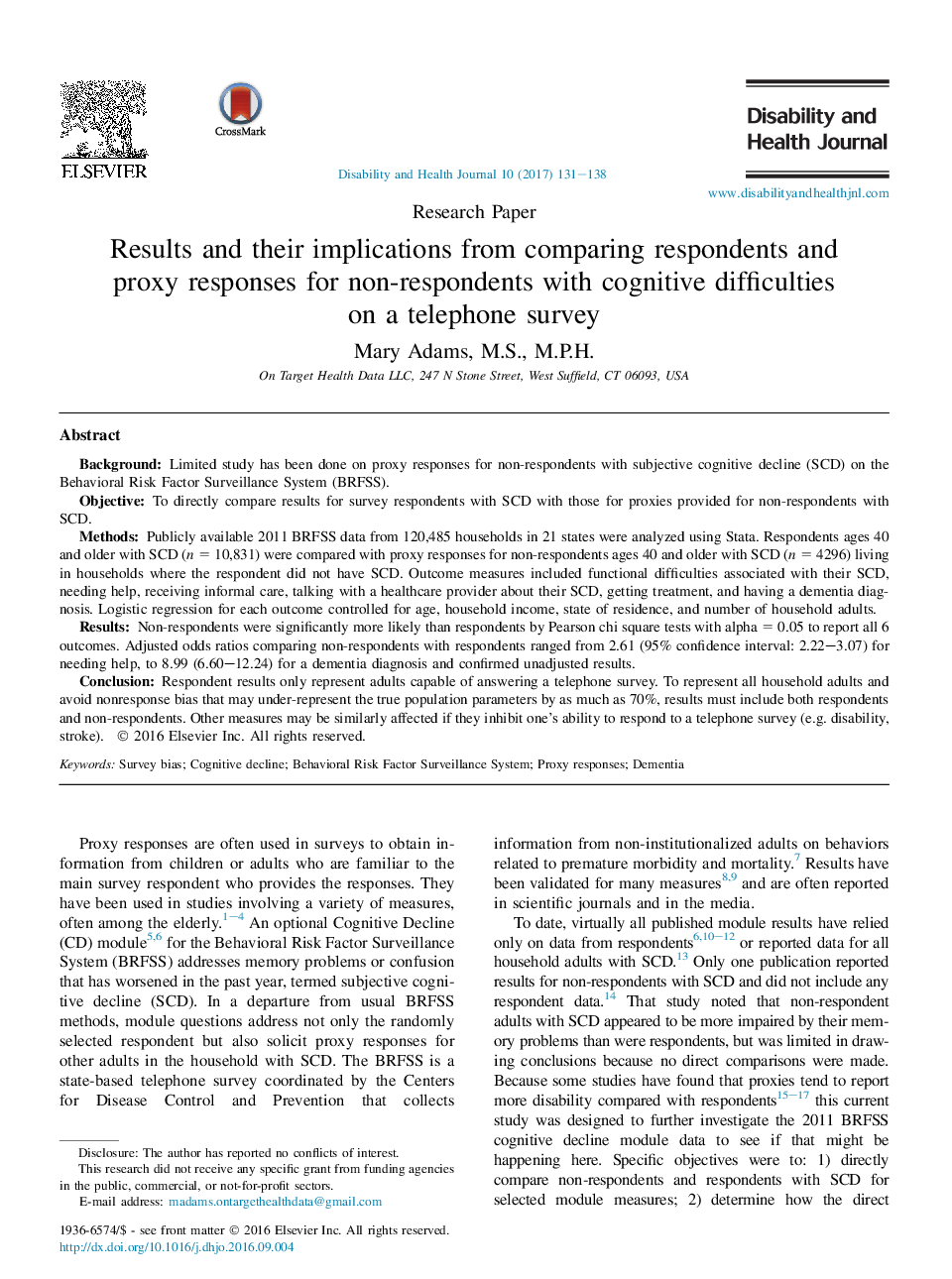| Article ID | Journal | Published Year | Pages | File Type |
|---|---|---|---|---|
| 5723287 | Disability and Health Journal | 2017 | 8 Pages |
BackgroundLimited study has been done on proxy responses for non-respondents with subjective cognitive decline (SCD) on the Behavioral Risk Factor Surveillance System (BRFSS).ObjectiveTo directly compare results for survey respondents with SCD with those for proxies provided for non-respondents with SCD.MethodsPublicly available 2011 BRFSS data from 120,485 households in 21 states were analyzed using Stata. Respondents ages 40 and older with SCD (n = 10,831) were compared with proxy responses for non-respondents ages 40 and older with SCD (n = 4296) living in households where the respondent did not have SCD. Outcome measures included functional difficulties associated with their SCD, needing help, receiving informal care, talking with a healthcare provider about their SCD, getting treatment, and having a dementia diagnosis. Logistic regression for each outcome controlled for age, household income, state of residence, and number of household adults.ResultsNon-respondents were significantly more likely than respondents by Pearson chi square tests with alpha = 0.05 to report all 6 outcomes. Adjusted odds ratios comparing non-respondents with respondents ranged from 2.61 (95% confidence interval: 2.22-3.07) for needing help, to 8.99 (6.60-12.24) for a dementia diagnosis and confirmed unadjusted results.ConclusionRespondent results only represent adults capable of answering a telephone survey. To represent all household adults and avoid nonresponse bias that may under-represent the true population parameters by as much as 70%, results must include both respondents and non-respondents. Other measures may be similarly affected if they inhibit one's ability to respond to a telephone survey (e.g. disability, stroke).
